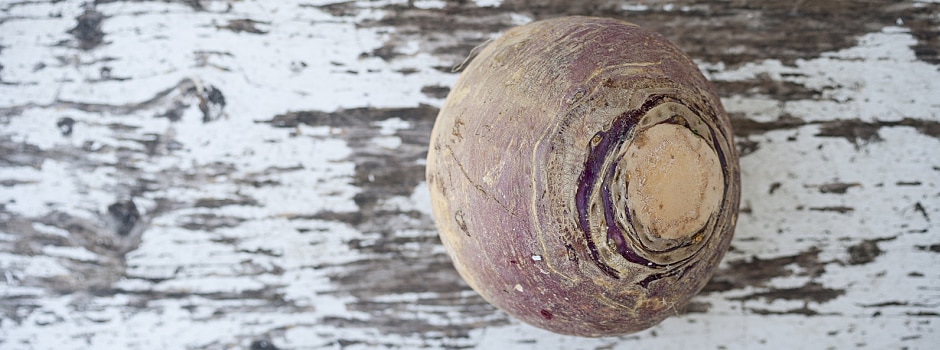This year's fall food trend is rutabaga—and rightfully so because it's delicious and super easy to cook. It's currently one of the least popular vegetables, but that's about to change. Savvy chefs who are looking to attract new business by offering interesting and unexpected meals during the colder months are adding rutabaga dishes to their menus.
The best part about rutabaga is that you can prepare it just like a potato, which translates to more ways than you can count, and it's much lower in carbohydrates. Plus, it's cost-effective and full of flavor, so your bottom line could get a boost from rutabaga.
Here's what you should know about the rustic root vegetable that's about to rock the restaurant world as this year's fall food trend.
Rutabaga: A Quick Introduction
Rutabaga is believed to be a cross between turnips and cabbage, and it's said to have originated in Sweden, which is where its nickname, the "swede," comes from. You can find rutabaga used all over Scandinavia in side dishes (mashed or roasted) and as a component of traditional holiday feasts.
Some people are born with a gene that makes rutabaga taste highly bitter, but to those born without that unfortunate gene, the flavor is mild, earthy, and bittersweet. The skin is typically waxed and can range from tan to deep violet, and the inner flesh is a mellow gold. Store rutabagas in your fridge in an unsealed plastic bag, and wash and peel the skin thoroughly before cooking them.
Easy Ways to Cook with Rutabaga
When it comes to rutabaga, the most simple preparations are often the best, but that doesn't mean you shouldn't add secret ingredients or a twist. For instance, consider enhancing the flavor profile of mashed rutabaga with the sweetness of maple syrup, honey, or kecap manis; the heat of fresno, jalapeno, or serrano chilies; or the umami of truffles, grain mustard, or crispy shallots. You could even add a wild card like wasabi, lemongrass, or fresh thyme to up the intensity factor even more. Mashed rutabaga certainly benefits from butter or cream, but these ingredients are fine to omit for vegan and low-calorie cooking.
You can also cut rutabaga into large chunks, toss it in some oil and seasoning, and roast it until it's beautifully browned. A 400-degree oven for 45 minutes to an hour should do the trick. As far as flavor, you can let the true rutabaga flavor shine by simply kissing it with kosher salt and a pinch of black pepper. Or you can feel free to let your creativity come out by coating it in curry powder, coarse harissa spice, or a mix of your favorite herbs.
How to Put a Unique Spin on This Vegetable
Don't feel like you need to stay conventional when it comes to rutabaga; after all, this is a new fall food trend, so boundaries should be broken. For instance, you could take inspiration from this roasted rutabaga hummus recipe and transform the root vegetable into something your guests won't expect. Instead of making your own version of hummus, consider a creamy dip with creme fraiche or sour cream and dill served with raw rutabaga "chips." Add some chopped bacon if you're not aiming to please vegetarians.
You can also make your own version of sweet or savory rutabaga pie by adding fruits, brown sugar, and spices, or high-quality meats, aromatics, and seasonings. You could also ditch the traditional potato-packed recipe and make rutabaga latkes to celebrate Hanukkah.
Chefs can play with rutabaga in many ways. Start with these tips and don't hold back when you take advantage of this hot fall food trend.
Related Articles

Spice Up Fall with Easy Seasonal Cocktail Ideas
Seasonal ingredients aren’t just for your dinner menu—surprise your customers by bringing cold-weather flavors behind the bar.

Menu Design 101: Is Your Restaurant's Menu the Right Size?
When it comes to menu design, here are some tips and considerations to think about when planning the size of your menu to maximize profits.

Local Farmers Market: How to Build Lasting Relationships
Here's what chef Ricky Casipe of Hawthorne Food and Drink had to say about the importance of building relationships at your local farmers market.
